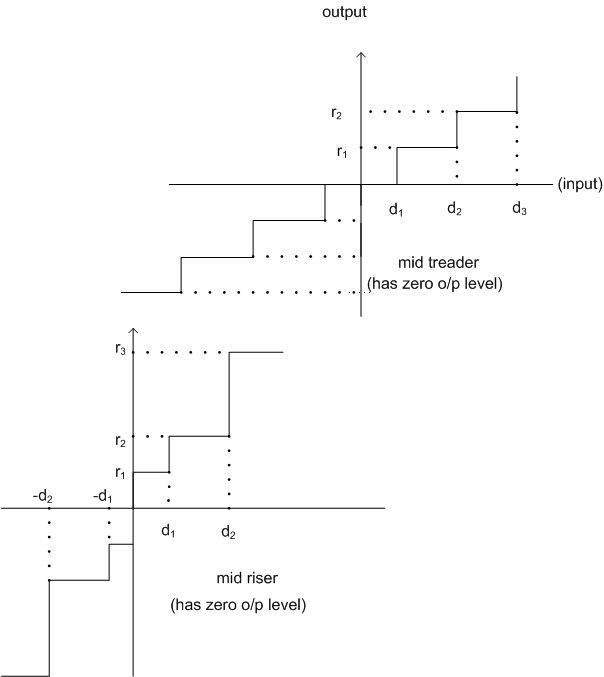Quantization
This involves representing the sampled data by a finite number of levels based on some criteria such as minimization of the quantizer distortion, which must be meaningful.
Quantizer design includes input (decision) levels and output (reconstruction) levels as well as number of levels. The decision can be enhanced by psychovisual or psychoacoustic perception.
Quantizers can be classified as memoryless (assumes each sample is quantized independently) or with memory (takes into account previous sample) .
We limit our discussion to memoryless quantizers.
Alternative classification of quantisers is based on uniform or non- uniform quantization. They are defined as follows.
Uniform quantizers |
Non-uniform quantizers |
They are completely defined by (1) the number of levels it has (2) its step size and whether it is midriser or midtreader. We will consider only symmetric quantizers i.e. the input and output levels in the 3 rd quadrant are negative of those in 1st quandrant. |
The Step sizes are not constant. Hence non-uniform quantization is specified by input and output levels in the 1st and 3rd quandrants |

Figure(3.3.1) Uniform Quantisers |
| Step size constant in bothcases |

Figure(3.3.2) Non-Uniform quantizer
Quantizer design
Given the number of input or output levels , quantizer design involves minimizing any meaningful quantizer distortion such as:
1) Mean square Quantization Error (MSQE),
defined as,

where input  ranges from ranges from  to to  and and  is probability density function of is probability density function of 
2) Mean absolute quantization error (MAQE):

3) Mean  norm quantization error norm quantization error

 is any positive integer is any positive integer
4) Weighted quantization error

where  is the weighting function. is the weighting function.
|